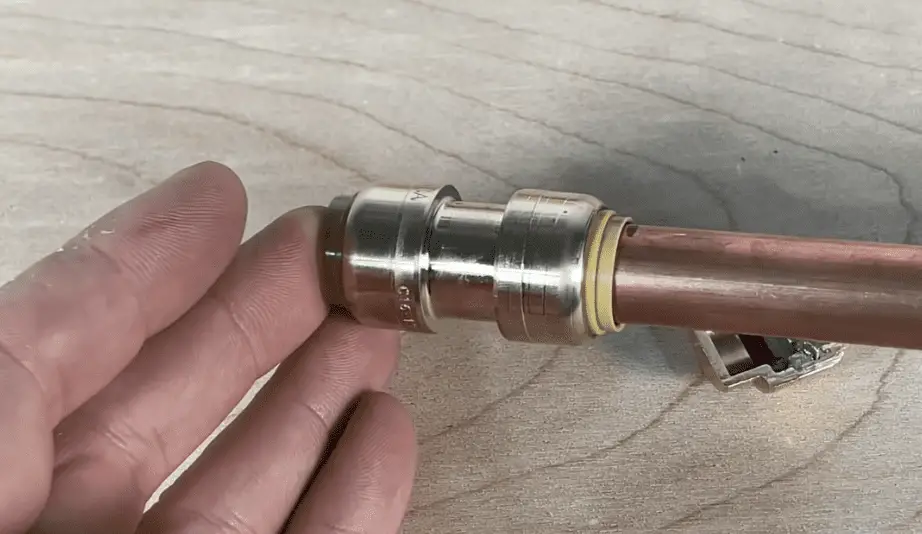SharkBite fittings may be new on the timescale of indoor plumbing, but they’ve been on the market for more than 17 years now. Steadily, they’re becoming more trusted as their longevity and reliability continue. While SharkBite is unquestionably a well-constructed product with a premium price to match, there are pros and cons.
In this article, we’ll cover the pros and cons, discuss the history, and share what’s inside. That way, you can better understand how they work. There are many cases where SharkBite fittings are the ideal choice for your project. And there are even a couple of uses that are a no-brainer for every DIYer.
Rather watch than read? Check out this 9-minute video.
SharkBite Products Examined (or Discussed) in this Article:
DISCLAIMER: This blog contains affiliate links, which means that if you click on one of the product links, I’ll receive a small commission.
History and Internal Design of SharkBite Fittings
SharkBite fittings were released in 2004, but the concept of push-in or push-fit plumbing fittings is not new. Similar products have been around since the 1980’s in the United States and parts of Europe. While other brands exist, such as Nibco Push, PlumBite, and Tactite, SharkBite has become the market leader in their segment.
But what exactly are SharkBite fittings? SharkBite fittings form a type of compression joint. This is where a seal is made between a rubber O-ring and the exterior circumference of the inserted pipe. An integrated rigid tube within the connector acts as a support for the inside of softer pipe (such as PEX). And this helps the O-ring maintain a compressive seal against the pipe exterior.
Separately, a ring of inward-facing stainless-steel teeth grips the outside of the pipe ahead of the O-ring. This allows it to be pushed-in but not pulled-out. Despite this, SharkBite fittings can be removed, reconfigured, and reused.
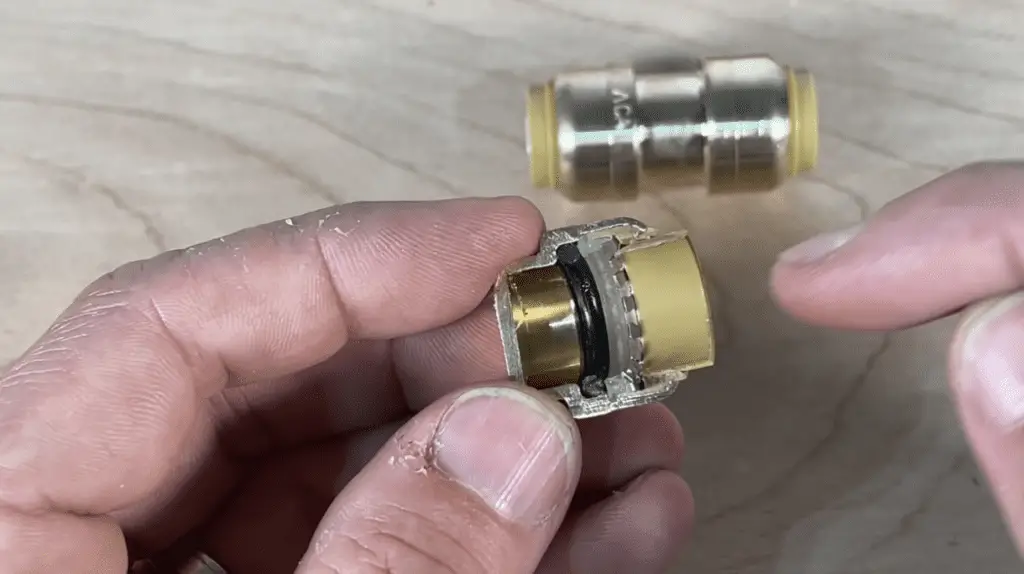
How SharkBite Fittings Are Installed/Removed
You install SharkBite fittings and valves by simply inserting a pipe and pressing firmly until fully seated. As is the case with anything seemingly so simple, the devil is in the details. And good preparation is paramount to making a successful seal.
For the O-ring to seal, the outside of the pipe end needs to be clean and free of sharp edges/burrs. For metal pipe, like copper especially, the pipe needs to be perfectly round and not deformed or squished.
Second, make sure the pipe is “seated” into the connector. The pipe will encounter two areas of resistance upon insertion. First, against the metal teeth. Then, against the O-ring.
There is, fortunately, a deburring tool made by SharkBite which removes any burrs from the end of the pipe. At the same time, it also acts as a depth gauge for marking to ensure proper insertion. Is the pipe is particularly dirty, rough, or corroded? You may need to clean and smooth it. Consider using a wire brush, steel wool, or emery cloth (fabric-backed fine sandpaper). If you do need to clean the pipe be careful as the finish needs to be smooth to ensure the o-ring will have a good seal completely around the pipe.
The SharkBite’s teeth “bite into” the surface of the pipe from the outside (hence the name). But due to the unique design, it’s also possible to remove a fitting or disassemble a connection. The SharkBite removal tool is a C-shaped clip that will press against the nylon ring protruding from the end of the connector around the pipe.
As the ring is pressed inward, it wedges between the pipe and the teeth. This prevents them from gripping the pipe and allowing the fitting to be slid off. When properly installed and removed, SharkBite fittings can be used many times over. And they’ll create connections that should remain trouble-free for years.
Variety of SharkBite Fittings Available
You may find the variety of SharkBite products surprising! Initially, they were available in simple connectors, elbows, tees, and caps. But now, there is a wide assortment of valves and other fixtures available to make many DIY jobs a snap.
Faucets, ball valves, and even frost-free outdoor spigots are available with SharkBite connections. You can even find chrome-finished supply valves, which greatly simplify DIY kitchen and bath projects.
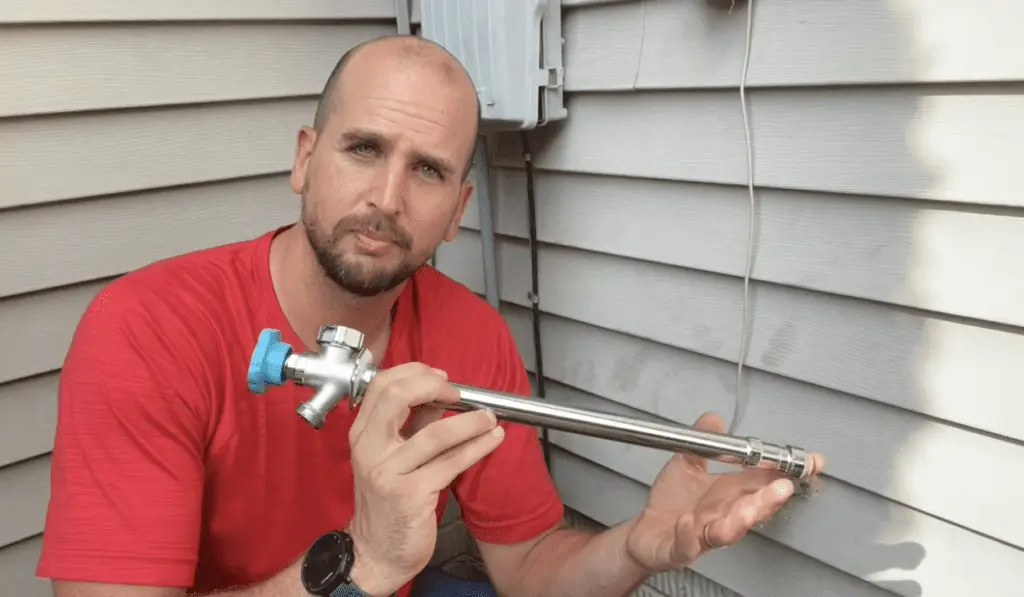
Pros and Cons of SharkBite Fittings
The primary benefit of SharkBite fittings and fixtures is that they’re easy to install. You don’t need any additional tools. Even removal is easy with just one small tool, making them an ideal solution for DIY projects and repairs.
You can use SharkBite fittings on (or even to convert between) many different pipe materials, including copper, PEX, and CPVC. These ordinarily would require solder joints, special adhesives, or other tools to properly install. Hybrid SharkBite fittings even allow interconnection via traditional means, such as a barbed connection for PEX on one end of a connector.
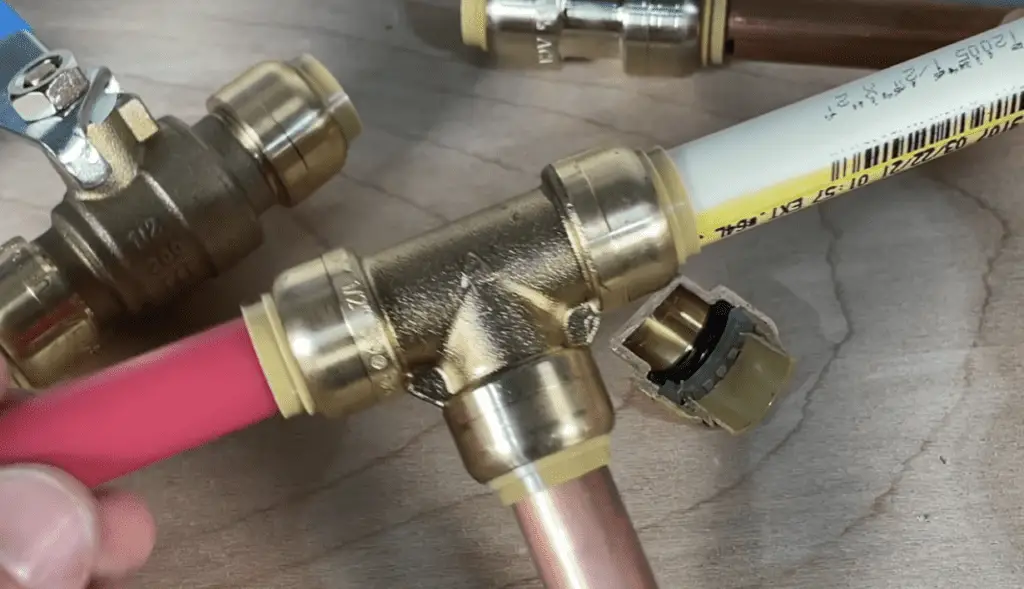
If you’re repairing a copper pipe (and you can’t shut it off or fully drain it), SharkBite may be one of the only viable options. Even a small amount of standing water inside a copper pipe or fitting is enough to prevent the metal from reaching temperatures high enough to melt and flow solder.
The biggest drawback to SharkBite is its price. They can be fifteen times as expensive per fitting when compared to traditionally soldered copper. This is likely what makes the product less favored by professionals, who often try to maintain the lowest possible overhead costs.
SharkBite connections tend to be bigger and bulkier than other methods. So they may be unable to fit within the space allowed. Especially when used extensively in a plumbing system, the smaller inner diameter of the connections effectively reduces the diameter of the pipes they’re used on.
While SharkBite products are often reliable products, they’re still new! So the reputation is still in the early stages. Some are hesitant to fully trust the connections inside walls, ceilings and other inaccessible locations, fearing the rubber O-rings as a potential future failure point.
Conclusions and Where to Use SharkBites in Everyday DIY Plumbing
The wide variety and style of fittings and valves available make SharkBite an attractive and easy option for do-it-yourself projects. But how can you offset the extra cost? Think of the time and money that you’d spend using traditional methods — or hiring a tradesperson!
With nearly 150 SharkBite connections made every minute of every day, there is a massive existing installed base of connections which continues to grow at an incredible rate. While a low failure rate suggests a reliable product, time will tell the tale of their overall dependability.
Splitting the difference, it’s perhaps best to be somewhat cautious with the use of SharkBite. Restrict the use to repairs and upgrades in areas that are accessible for future inspection or repair if needed. While nothing beats traditionally sweated (soldered) copper pipe, there’s no reason SharkBite fittings can’t be a healthy part of your DIY plumbing diet.
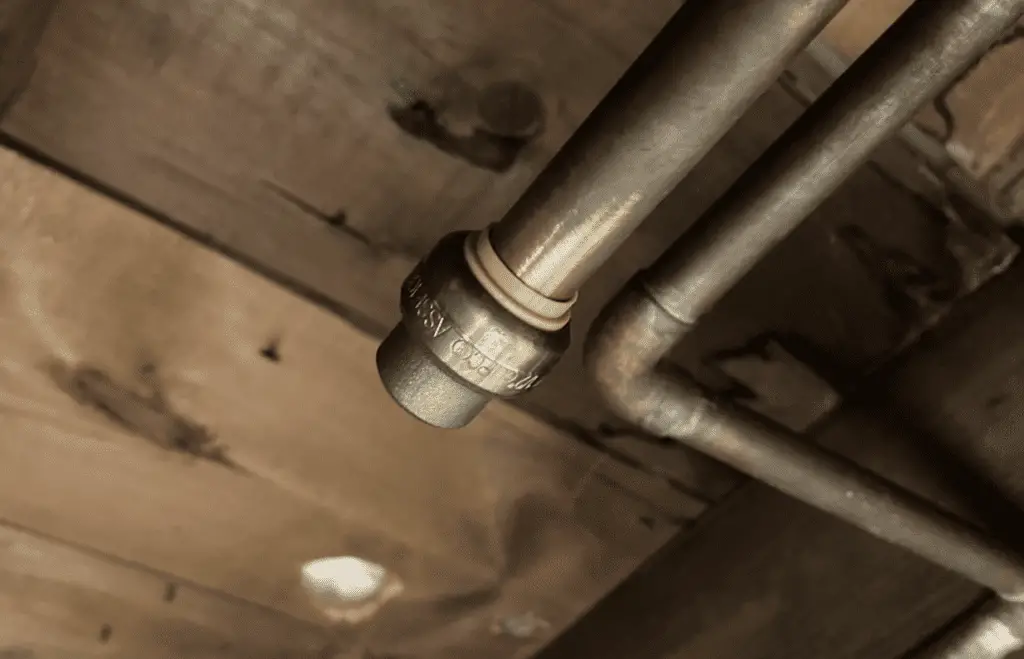
One particular SharkBite product that ought to be in every homeowner’s (and professional’s) toolbox are caps or ball valves to stop the flow of water in an emergency. Combined with a pipe cutter, you will always have a way to stop the water, even when you otherwise don’t have access to a valve or main shutoff.
It’s also great that you can press on a cap without other tools (in an emergency). And since the fittings are removable, if you desire, you can do a temporary repair or capping with traditional methods if you desire, after the emergency has passed. If you use a valve rather than a cap, you can integrate it into the permanent repair without removing it.
Pro Tip: When trying to stop the flow of running water under pressure, it can be difficult to exert enough force to get a cap on. Using a valve can help, since you can push it in the open position allowing water to flow through, then turned off once seated.
In fact, this is a great way to start if you’re considering dipping a toe in the SharkBite ocean. A new valve where you didn’t have one before can be beneficial for future work, and many older homes have few, if any, “local” shutoff valves for different areas or rooms.
There’s no reason not to consider SharkBite for your next DIY project! As long as you’re exercising good judgment and installing them properly, SharkBite can offer a long and trouble-free service life.
